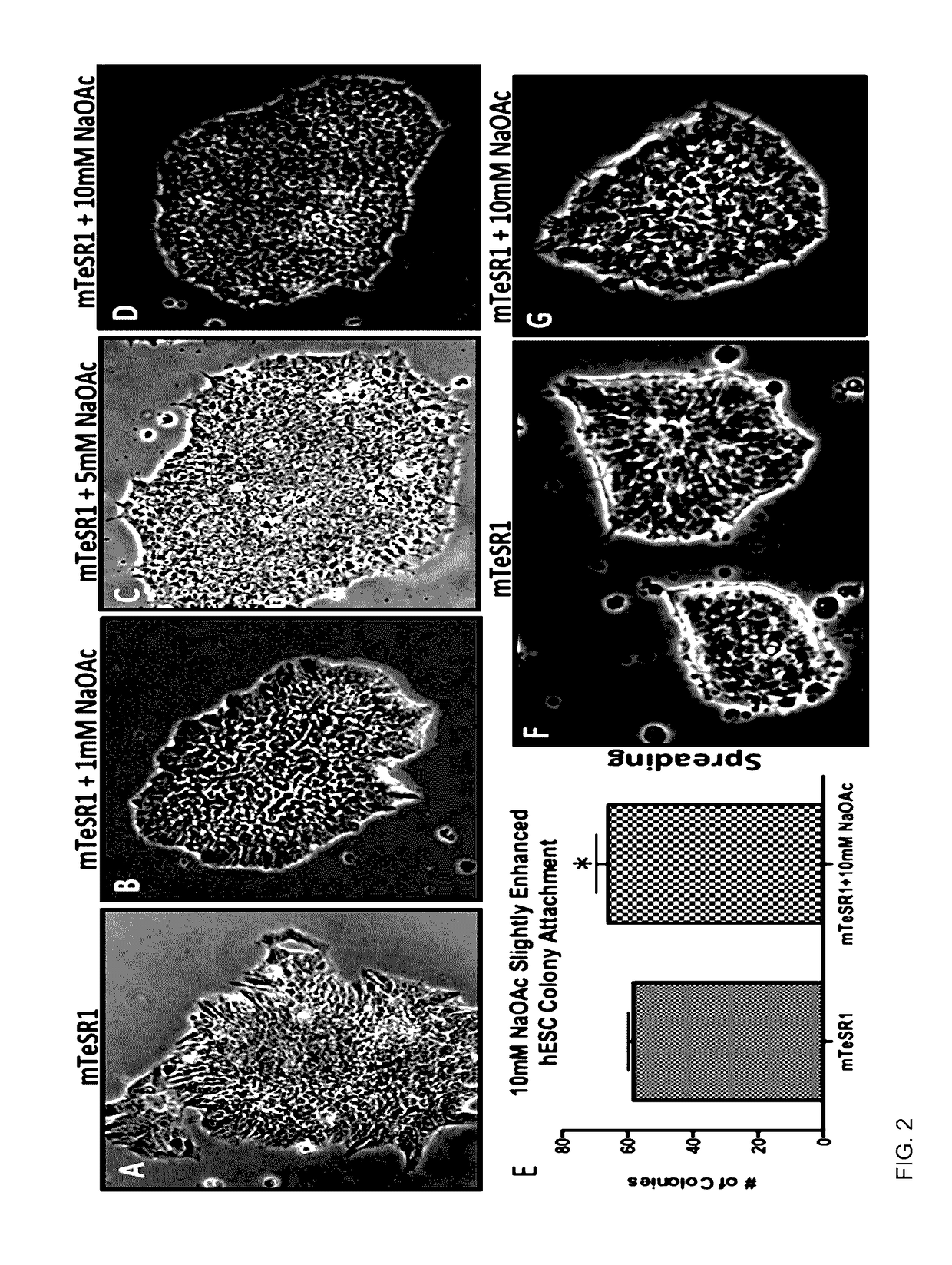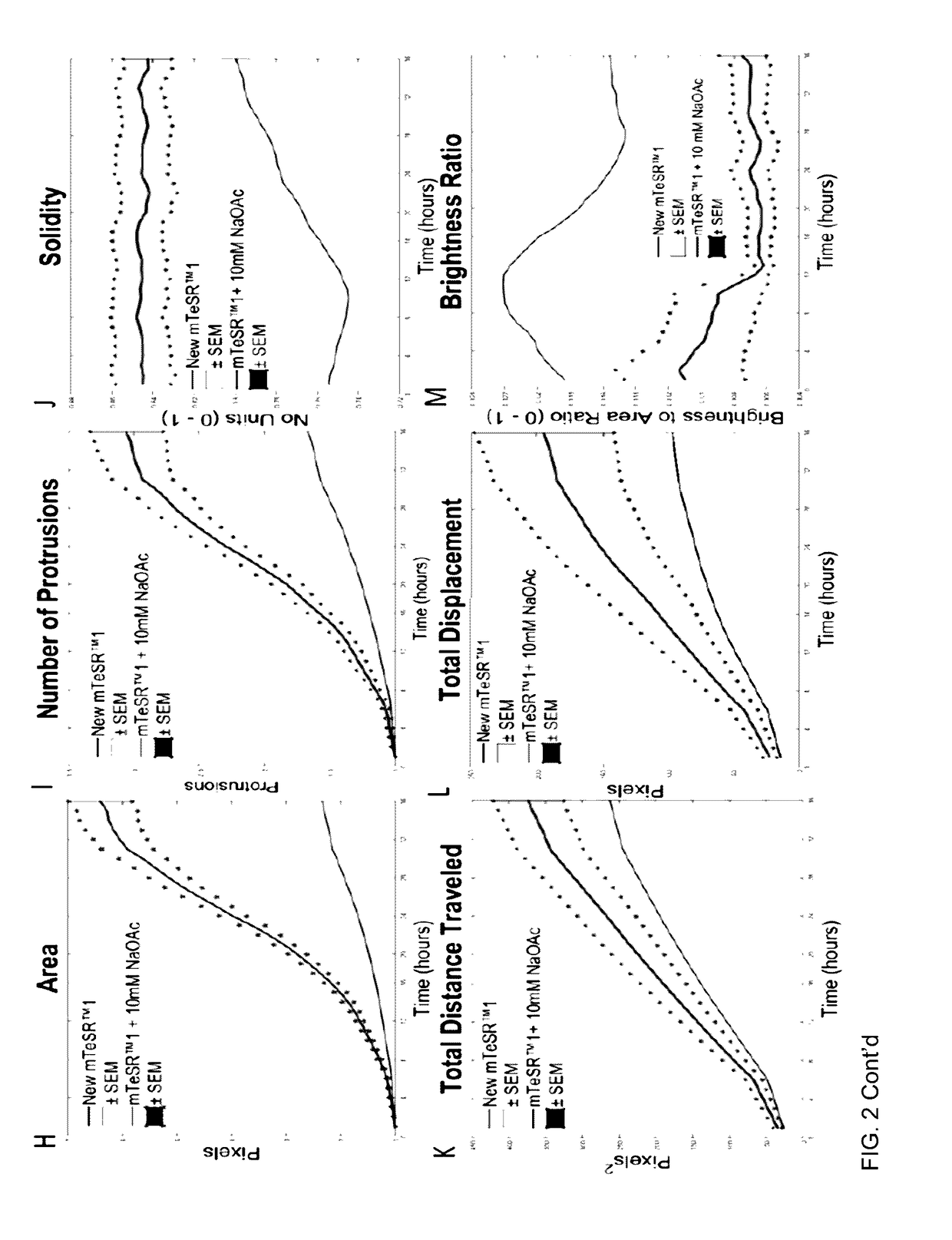Technology for sustaining pluripotency and improved growth of stem cells in culture
a technology of stem cell growth and cell quality, applied in the field of cell culture media, can solve the problems of undifferentiated psc, and insufficient pluripotency of psc in commercial media, so as to achieve faster attachment and spread, improve cell quality, and improve the effect of cell quality
- Summary
- Abstract
- Description
- Claims
- Application Information
AI Technical Summary
Benefits of technology
Problems solved by technology
Method used
Image
Examples
example 1
[0038]Standard hPSC culture medium (e.g. mTeSR manufactured by Stem Cell Technologies, Vancouver, Canada) can be greatly improved by the addition of 5 mM-10 mM sodium acetate trihydrate (NaOAc.3H2O) before placing medium on cells. FIG. 1 shows human embryonic stem cell colonies growing in an old batch of mTeSR culture medium that maintained pluripotency vs a new batch that does not support pluripotency. Colonies in the old batch have cells that are tightly packed and the edges of the colonies are smooth, not pointy (FIGS. 1A-D). These are hallmarks of healthy pluripotent human embryonic stem cells (hESC) in culture. In new batches of mTeSR, the edges of colonies show radial alignment of cells (FIG. 1E, F), spikey edges (FIG. 1G), and differentiation (FIG. 1H). These are not normal pluripotent stem cell morphologies and are observed when colonies begin to differentiate.
[0039]Addition of 5 mM-10 mM of the additive NaOAc.3H2O to mTeSR allowed colonies to maintain the normal round, tigh...
PUM
 Login to View More
Login to View More Abstract
Description
Claims
Application Information
 Login to View More
Login to View More - R&D
- Intellectual Property
- Life Sciences
- Materials
- Tech Scout
- Unparalleled Data Quality
- Higher Quality Content
- 60% Fewer Hallucinations
Browse by: Latest US Patents, China's latest patents, Technical Efficacy Thesaurus, Application Domain, Technology Topic, Popular Technical Reports.
© 2025 PatSnap. All rights reserved.Legal|Privacy policy|Modern Slavery Act Transparency Statement|Sitemap|About US| Contact US: help@patsnap.com



